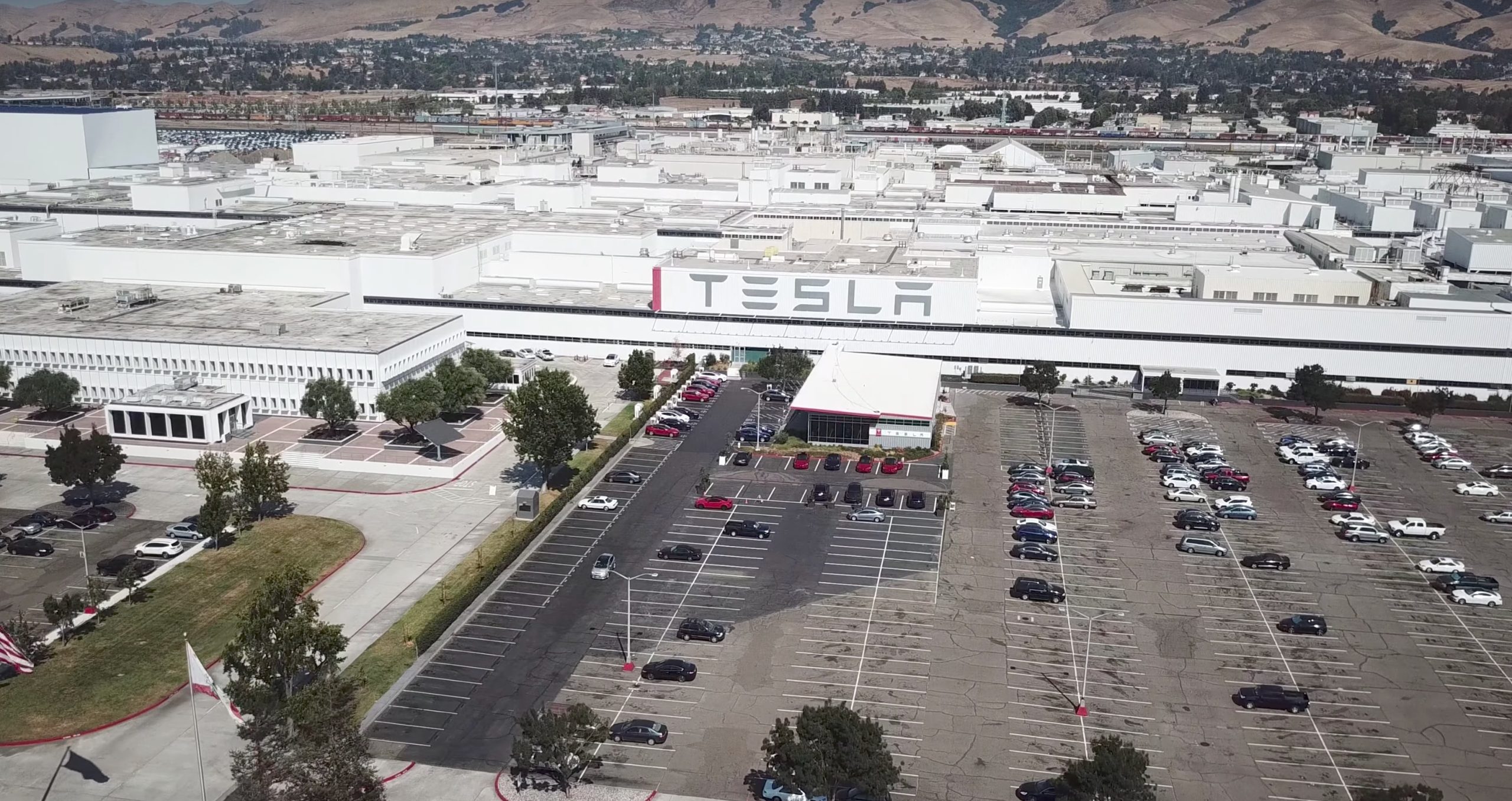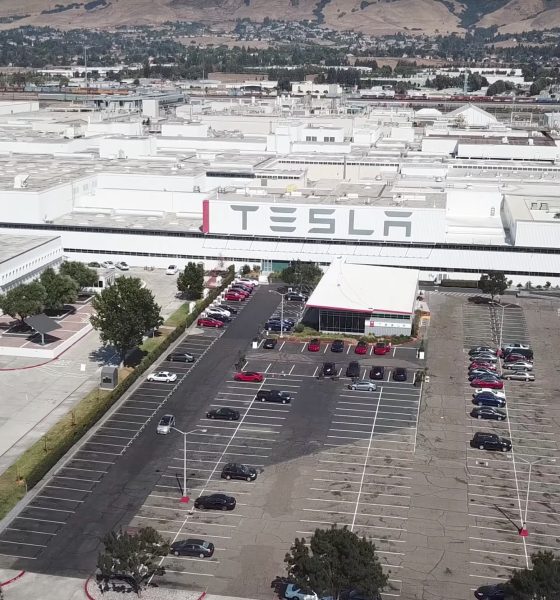

Investor's Corner
Tesla (TSLA) loses another VP, but it likely won’t have issues filling vacant executive posts
Less than a week after the departure of former CAO Dave Morton, Tesla VP for worldwide finance and operations Justin McAnear announced that he would be leaving the company on October. Prior to working for Tesla, McAnear was employed at Apple, where he served in the company’s finance team.
McAnear’s upcoming departure from the electric car maker has resulted in a fresh wave of reservations about Tesla’s high turnover rate. The company’s executive departures became a particular point of interest for the company’s critics, particularly in light of Elon Musk’s short-lived attempt to take the company private last month, as well as Tesla’s ongoing efforts to ramp Model 3 production and achieve profitability this Q3 2018.
Justin McAnear has issued a statement to The Verge about his upcoming departure, explaining that he is leaving Tesla because he has been offered a CFO role at another company. McAnear also noted that he is departing Tesla on good terms, and that several members of his team would be stepping up to fill his role.
“Several weeks ago, I announced to my team that I would be leaving Tesla because I had the chance to take a CFO role at another company. I’ve truly loved my time at Tesla, and I have great respect for my colleagues and the work they do, but this was simply an opportunity I couldn’t pass up. Any other speculation as to why I’ve left is simply inaccurate. I’ve been working with the team to ensure a smooth transition prior to my last day on October 7th, and a number of members of the team are stepping up to fill my role,” he noted.
In light of McAnear’s upcoming departure, Tigress Financial Partners chief investment officer Ivan Feinseth stated in a recent segment of Bloomberg Technology that while executive departures are never a good thing, Tesla would likely not have any problems filling its vacant executive roles. Feinseth further noted that Tesla’s place as a disruptor of the auto industry could very well be perceived as an opportunity by potential executives.
“I do believe there’s a long line of people who would love to work at Tesla. I don’t think they are going to have a hard time replacing anybody that’s leaving any of these positions, the opportunity to still get in on what is the ground floor of a company that is making huge changes to the automobile industry. And that is very appealing to people who are in Silicon Valley. A lot of companies do have high turnover. People in Silicon Valley tend to look for the next big opportunity. So the turnover is never good, but I think there’s opportunity to fill the positions pretty easily,” he said.
Tesla’s position as a disruptor in the US auto industry could very well be established this Q3 2018. After hitting its then-elusive goal of producing 5,000 Model 3 in a week at the end of June, the company has been in overdrive trying to sustain its optimal production levels for the electric car. In an email to employees shared on Tesla’s official blog on Friday, Elon Musk stated that the company is on the cusp of its most “amazing” quarter in its history, likely build and deliver “more than twice as many cars” as it did in Q2 2018.
Since the announcement of Justin McAnear’s upcoming departure and his subsequent statement explaining why he is leaving the company, Tesla stock (NASDAQ:TSLA) has largely remained resilient. As of writing, the company’s stocks are trading at $289.48, down 0.36% from Wednesday’s $290.54 close.
Disclosure: I have no ownership in shares of TSLA and have no plans to initiate any positions within 72 hours.

Investor's Corner
Tesla stock closes at all-time high on heels of Robotaxi progress

Tesla stock (NASDAQ: TSLA) closed at an all-time high on Tuesday, jumping over 3 percent during the day and finishing at $489.88.
The price beats the previous record close, which was $479.86.
Shares have had a crazy year, dipping more than 40 percent from the start of the year. The stock then started to recover once again around late April, when its price started to climb back up from the low $200 level.
This week, Tesla started to climb toward its highest levels ever, as it was revealed on Sunday that the company was testing driverless Robotaxis in Austin. The spike in value pushed the company’s valuation to $1.63 trillion.
Tesla Robotaxi goes driverless as Musk confirms Safety Monitor removal testing
It is the seventh-most valuable company on the market currently, trailing Nvidia, Apple, Alphabet (Google), Microsoft, Amazon, and Meta.
Shares closed up $14.57 today, up over 3 percent.
The stock has gone through a lot this year, as previously mentioned. Shares tumbled in Q1 due to CEO Elon Musk’s involvement with the Department of Government Efficiency (DOGE), which pulled his attention away from his companies and left a major overhang on their valuations.
However, things started to rebound halfway through the year, and as the government started to phase out the $7,500 tax credit, demand spiked as consumers tried to take advantage of it.
Q3 deliveries were the highest in company history, and Tesla responded to the loss of the tax credit with the launch of the Model 3 and Model Y Standard.
Additionally, analysts have announced high expectations this week for the company on Wall Street as Robotaxi continues to be the focus. With autonomy within Tesla’s sights, things are moving in the direction of Robotaxi being a major catalyst for growth on the Street in the coming year.
Elon Musk
Tesla needs to come through on this one Robotaxi metric, analyst says
“We think the key focus from here will be how fast Tesla can scale driverless operations (including if Tesla’s approach to software/hardware allows it to scale significantly faster than competitors, as the company has argued), and on profitability.”

Tesla needs to come through on this one Robotaxi metric, Mark Delaney of Goldman Sachs says.
Tesla is in the process of rolling out its Robotaxi platform to areas outside of Austin and the California Bay Area. It has plans to launch in five additional cities, including Houston, Dallas, Miami, Las Vegas, and Phoenix.
However, the company’s expansion is not what the focus needs to be, according to Delaney. It’s the speed of deployment.
The analyst said:
“We think the key focus from here will be how fast Tesla can scale driverless operations (including if Tesla’s approach to software/hardware allows it to scale significantly faster than competitors, as the company has argued), and on profitability.”
Profitability will come as the Robotaxi fleet expands. Making that money will be dependent on when Tesla can initiate rides in more areas, giving more customers access to the program.
There are some additional things that the company needs to make happen ahead of the major Robotaxi expansion, one of those things is launching driverless rides in Austin, the first city in which it launched the program.
This week, Tesla started testing driverless Robotaxi rides in Austin, as two different Model Y units were spotted with no occupants, a huge step in the company’s plans for the ride-sharing platform.
Tesla Robotaxi goes driverless as Musk confirms Safety Monitor removal testing
CEO Elon Musk has been hoping to remove Safety Monitors from Robotaxis in Austin for several months, first mentioning the plan to have them out by the end of 2025 in September. He confirmed on Sunday that Tesla had officially removed vehicle occupants and started testing truly unsupervised rides.
Although Safety Monitors in Austin have been sitting in the passenger’s seat, they have still had the ability to override things in case of an emergency. After all, the ultimate goal was safety and avoiding any accidents or injuries.
Goldman Sachs reiterated its ‘Neutral’ rating and its $400 price target. Delaney said, “Tesla is making progress with its autonomous technology,” and recent developments make it evident that this is true.
Investor's Corner
Tesla gets bold Robotaxi prediction from Wall Street firm
Last week, Andrew Percoco took over Tesla analysis for Morgan Stanley from Adam Jonas, who covered the stock for years. Percoco seems to be less optimistic and bullish on Tesla shares, while still being fair and balanced in his analysis.

Tesla (NASDAQ: TSLA) received a bold Robotaxi prediction from Morgan Stanley, which anticipates a dramatic increase in the size of the company’s autonomous ride-hailing suite in the coming years.
Last week, Andrew Percoco took over Tesla analysis for Morgan Stanley from Adam Jonas, who covered the stock for years. Percoco seems to be less optimistic and bullish on Tesla shares, while still being fair and balanced in his analysis.
Percoco dug into the Robotaxi fleet and its expansion in the coming years in his latest note, released on Tuesday. The firm expects Tesla to increase the Robotaxi fleet size to 1,000 vehicles in 2026. However, that’s small-scale compared to what they expect from Tesla in a decade.
Tesla expands Robotaxi app access once again, this time on a global scale
By 2035, Morgan Stanley believes there will be one million Robotaxis on the road across multiple cities, a major jump and a considerable fleet size. We assume this means the fleet of vehicles Tesla will operate internally, and not including passenger-owned vehicles that could be added through software updates.
He also listed three specific catalysts that investors should pay attention to, as these will represent the company being on track to achieve its Robotaxi dreams:
- Opening Robotaxi to the public without a Safety Monitor. Timing is unclear, but it appears that Tesla is getting closer by the day.
- Improvement in safety metrics without the Safety Monitor. Tesla’s ability to improve its safety metrics as it scales miles driven without the Safety Monitor is imperative as it looks to scale in new states and cities in 2026.
- Cybercab start of production, targeted for April 2026. Tesla’s Cybercab is a purpose-built vehicle (no steering wheel or pedals, only two seats) that is expected to be produced through its state-of-the-art unboxed manufacturing process, offering further cost reductions and thus accelerating adoption over time.
Robotaxi stands to be one of Tesla’s most significant revenue contributors, especially as the company plans to continue expanding its ride-hailing service across the world in the coming years.
Its current deployment strategy is controlled and conservative to avoid any drastic and potentially program-ruining incidents.
So far, the program, which is active in Austin and the California Bay Area, has been widely successful.








